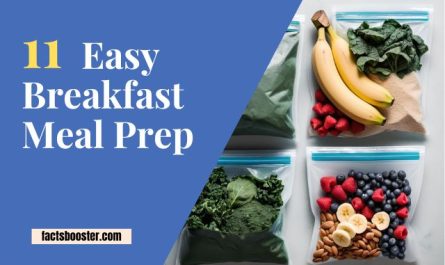Do you often feel uncomfortably bloated after meals, like your stomach is tight and swollen—even when you didn’t eat that much? It’s as if you swallowed a balloon, and even sitting feels uncomfortable. You’re not alone—many people, especially those with sensitive digestion, experience this kind of post-meal discomfort. I used to be the same. After eating, I frequently felt bloated, burped a lot, and sometimes even experienced indigestion. I thought something was wrong with my stomach.
It wasn’t until I accidentally changed the way I ate—specifically the order in which I ate my food—that I realized the real issue wasn’t what I was eating, but how I was eating. Eating sequence helps reduce bloating—this is something I experienced firsthand. Once I started paying attention to the order of my meals, my digestion improved, the bloating went away, and I felt much more comfortable after eating. This small change brought surprisingly big results.

My Eating Habits Before
I never really paid attention to the order in which I ate my meals. Whenever I felt hungry—especially after getting home from work—I’d dive straight into a big plate of rice and stir-fried dishes on an empty stomach. I often ate quickly, sometimes finishing my entire meal in under ten minutes. Vegetables were usually an afterthought and not something I prioritized.
Over time, these habits started to cause problems. About an hour after eating, I would often feel bloated, my stomach tight and uncomfortable. Sometimes I experienced heart palpitations, burping, or even indigestion. Although I didn’t think much of it at first, these symptoms became frequent enough to make me wonder if something was wrong.
Eventually, I began adjusting the way I ate—starting with the order of foods on my plate. That’s when I noticed real changes. Eating sequence helps reduce bloating—and this simple shift made a noticeable difference in how I felt after meals.
Read more: 3 Simple Things That Can Improve Constipation!
Eating Sequence Helps Reduce Bloating
Many people don’t pay much attention to the order in which they eat their meals, but the sequence in which food enters your stomach can significantly impact digestion. Vegetables, which are rich in dietary fiber, are great to eat first—they act like a warm-up for your digestive system, helping to kick-start intestinal movement and prepare your gut for the meal ahead. (1)
Protein-rich foods like meat, eggs, and legumes require more stomach acid to break down. If your stomach isn’t ready, these foods can become harder to digest and put more strain on your gut. On the other hand, carbohydrates (like rice, noodles, and bread) digest the fastest and tend to ferment easily, producing gas.
If you tend to start your meals with large portions of carbs, they break down quickly and sit at the bottom of your stomach, while the protein you eat afterward piles on top, making digestion sluggish and inefficient. This often leads to bloating, burping, or even acid reflux.
Reversing this habit—eating vegetables first, then protein, and finishing with carbs—creates a smoother digestive flow. Eating sequence helps reduce bloating, and this simple, mindful change can make a big difference in your gut health and overall comfort after meals.
How I Adjusted My Eating Sequence
After realizing that the order of eating affects digestion, I started trying a gentler and more balanced approach to meals. Here’s exactly what I did:
Step 1: Start with vegetables
Before each meal, I would begin with a few bites of stir-fried greens, a fresh salad, or lightly cooked high-fiber vegetables like broccoli, spinach, or bok choy. This helps stimulate intestinal movement and warms up the digestive system.
Step 2: Follow with protein
Next, I would eat protein-rich foods such as eggs, tofu, chicken, or fish. These require more stomach acid to digest, so eating them after vegetables ensures the stomach is ready and can break them down more efficiently.
Step 3: Finish with carbohydrates
Finally, I’d have carbohydrates like rice, noodles, potatoes, or sweet potatoes. Since carbs ferment and produce gas easily, saving them for last helps minimize irritation to the stomach.
In addition to this eating sequence, I made a conscious effort to slow down while eating. I chewed each bite thoroughly, which not only reduced the burden on my digestive system but also gave my body time to signal when it was full.
For example, my breakfast would usually start with a portion of blanched greens and a boiled egg, followed by a small bowl of sweet potato porridge. For lunch and dinner, I’d stick to the same pattern. When eating out, I’d often order a plate of vegetables first and take my time eating the main course afterward.
This simple adjustment made a big difference—my digestion felt much smoother after meals, and the frequency of bloating decreased significantly.
Read more: Constipation can cause lower back pain!
Eating Sequence Helps Reduce Bloating — The Results Were Surprisingly Amazing!
About one to two weeks after adjusting my eating sequence, I began to notice clear changes in my body. The most immediate difference? No more post-meal bloating. That uncomfortable feeling of fullness and tightness in my stomach—sometimes even heart palpitations—almost completely disappeared. My belly felt lighter, and I wasn’t getting tired as easily after meals.
Even my sleep improved. I used to lie in bed feeling like my digestive system was still working overtime, making it hard to fall asleep. But now, I feel comfortable after eating, and the quality of my sleep has noticeably improved. While constipation didn’t disappear overnight, it has definitely gotten better.
What’s most surprising is that all these changes didn’t come from some extreme diet, but simply from one shift: Eating sequence helps reduce bloating. For me, it was a low-cost, practical solution that made a big difference—and it made me believe even more that when we find the right approach, the body will show us it’s on the path to healing.
Tips to Follow: Eating Sequence Helps Reduce Bloating
If you often struggle with bloating after meals, try following this simple eating sequence starting today: Vegetables → Protein → Carbs. In other words, begin your meal with vegetables, follow with protein, and finish with carbohydrates. This order aligns with your digestive rhythm, making each meal feel lighter and easier to digest.
Eat slowly and chew thoroughly—breaking down food in your mouth helps ease the burden on your stomach. Also, avoid starting your meal with greasy or overly sweet foods, as they can overstimulate acid production and cause discomfort.
After eating, avoid lying down or doing intense physical activity. Instead, stay standing or take a gentle walk for 10–15 minutes to support digestion.
This small yet powerful habit, especially when paired with a simple chart or reminder, can go a long way in relieving digestive issues and building a foundation for better long-term health.
Conclusion
If you often feel bloated or uncomfortable after meals, consider adjusting your eating sequence starting today. This small, simple change can make a big difference for your digestive health. Often, post-meal discomfort isn’t caused by illness, but by eating foods in the wrong order.
Eating sequence helps reduce bloating—it’s a gentle and practical approach that everyone can benefit from. Eating in the right order makes meals easier on your stomach and helps you feel lighter and more energized. Let better health begin one bite at a time, with every mindful meal.


